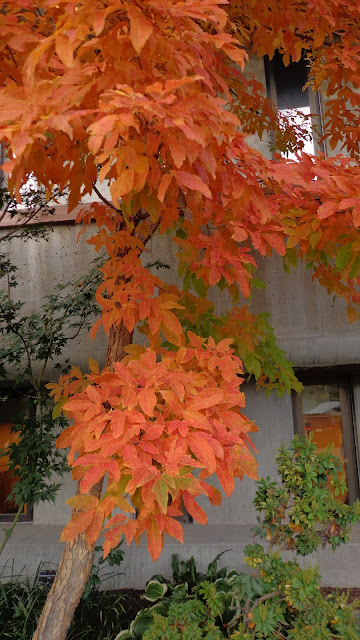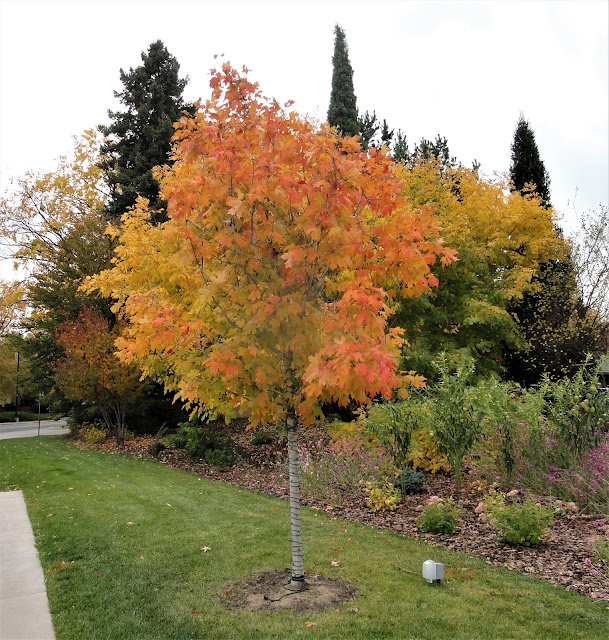 |
Aquilegia flabellata 'Nana'
|
What a strange year, as COVID-19 continues to rage, our gardens quietly perform their floral ballet: this year better than ever really. We had an extraordinarily prolonged, wet and wonderful spring (wettest in Denver history apparently) so plants grew luxuriantly! I had planted so many new things last year, and had so many more in the pipeline to plant this year that the garden has been a constant source of surprises. Of course, some like this miniature columbine are perennial classics I'd never want to be without (here growing in a trough).
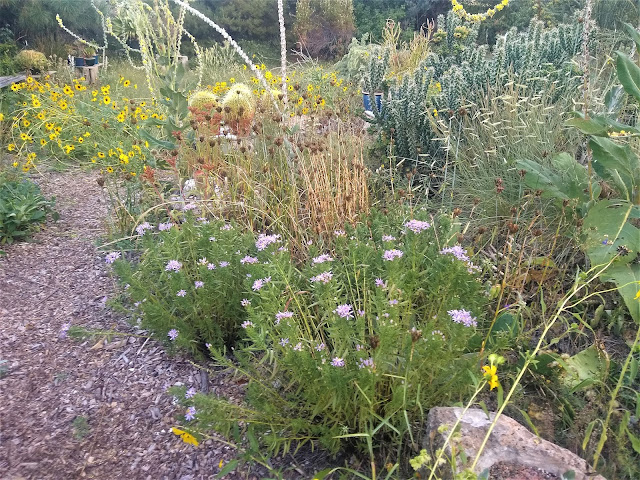 |
| Aster sedifolius |
Not as spectacular as it is at Kendrick Lake, where it makes a perfect sphere of blooms, Aster sedifolius did produce a smattering of flowers--the best yet. I can hope we'll end up with something like their cousins in Lakewood!
 |
Aruncus x 'Zweiweltenkind'
|
It is reputed to be a hybrid between A. dioicus and A. sinensis produced by Karl Foerster--it is much more compact than typical A. dioicus, and very tough in my experience. Siting typical goats beard is a little like parking a Humvee in a busy neighborhood (I've done neither yet).
 |
Arenaria attica
|
Not sure when I got this--but it's taken off and promises to be a fine small scale groundcover.
 |
Arabis carduchorum
|
I remember seeing this at Kew in 1981: I've grown it since then here and there--one of the toughest, most gratifying of rock garden mat formers. I've never seen it sold at a nursery.
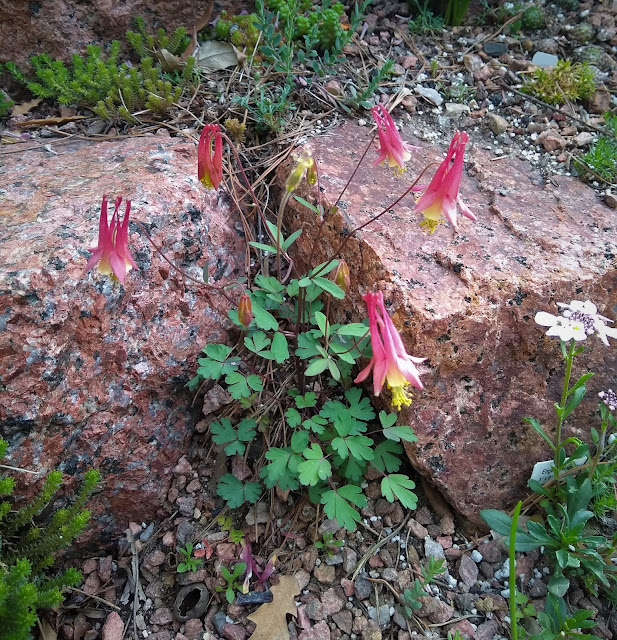 |
Aquilegia grahamii
|
Alas, this may have perished after blooming: a narrow endemic of the Uinta Basin--it's one of the most delightful dwarf columbines. Fortunately, it set lots of seed (some going to NARGS of course!)
 |
Aquilegia coerulea
|
Since this was named exactly 200 years ago by Edwin James, I had to include a picture of our famous state flower. That's Paeonia peregrina behind, completing the patriotic color theme!
 |
Aquilegia chrysantha
|
I'm quite sure I didn't plant this in the container--but I'll take credit for it anyway! What passes for chrysantha is surely a complex hybrid of several Southwestern columbines. The Denver Gold strain is incredibly vigorous and long blooming.
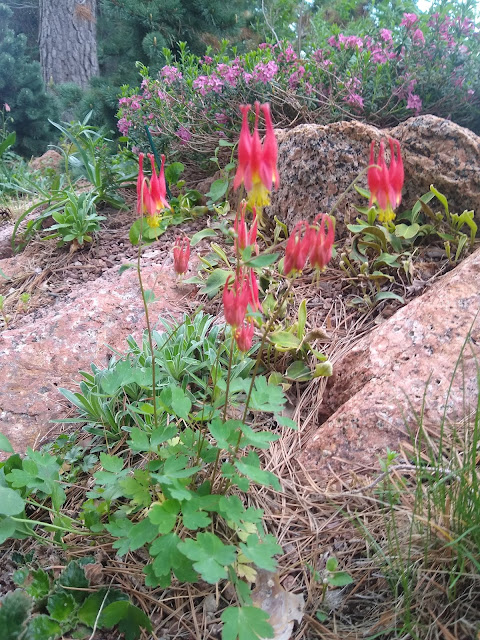 |
Aquilegia canadensis (dwf. form)
|
Can you tell I like columbines? But then it's Colorado: you're required to by law.=
 |
Anthyllis coccinea
|
The one indispensible Anthyllis: every other one I've grown's been weedy. This one is compact and the flower is electric.
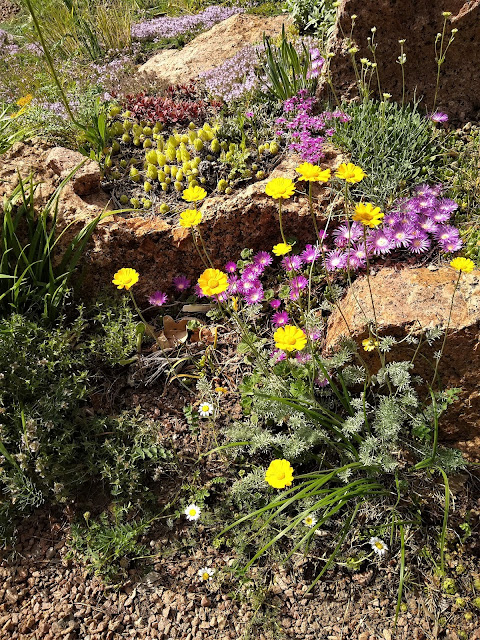 |
Anthemis biebersteiniana
|
Or is it A. marshalliana? You tell me. Under either name one of the best of its tribe.
 |
Anemone x seemanii
|
I have several clones of the hybrid between A. nemorosa and A. ranunculoides....hope it spreads as its parents do!
 |
Androsace taurica
|
Presumably from West Asia, this is by far the toughest of the villosa complex for me--in the ground or in troughs.
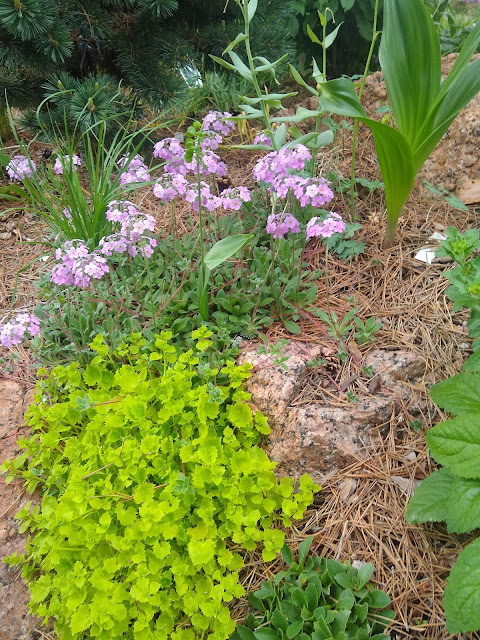 |
Androsace sarmentosa
|
Or is it A. primuloides? Or chumbyi....or perhaps A. studiosorum? Whatever the name, can't live without it!
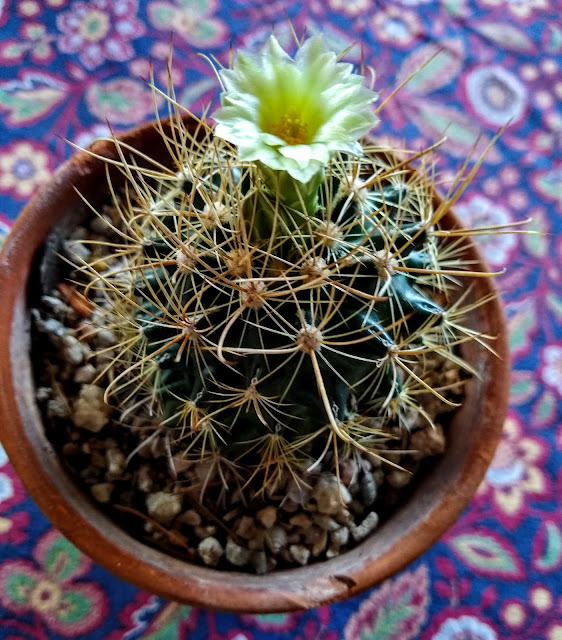 |
Ancistrocactus tobuschii
|
A wonderful gift from Pat and Joel Hayward who collected one (perhaps it had been dislodged) on their property where hundreds grew. The books say there are only fifty or a hundred left in nature. WRONG!
 |
Amsonia illustris
|
My signature bluestar: this is a self-sown seedling. Fortunately, there are not too many of these. Or maybe not so fortunately?
 |
Alyssum oxycarpum
|
For years Mikl Brawner and Eve Reshetnik have sung the praises of this (I got it from Harlequin's). I think I'm getting sold on it...
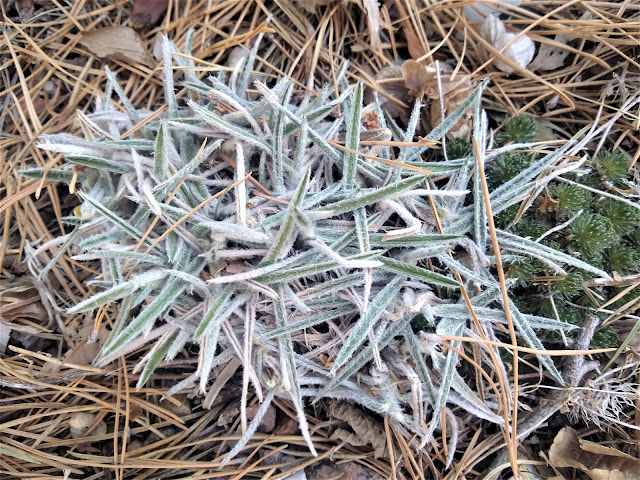 |
Alopecurus lanatus
|
My favorite grass. The rabbit-ear flower/seedpods are cute--but with foliage like this who needs flowers! Finding this on Ulu Dag above treeline was something I shall not soon forget!
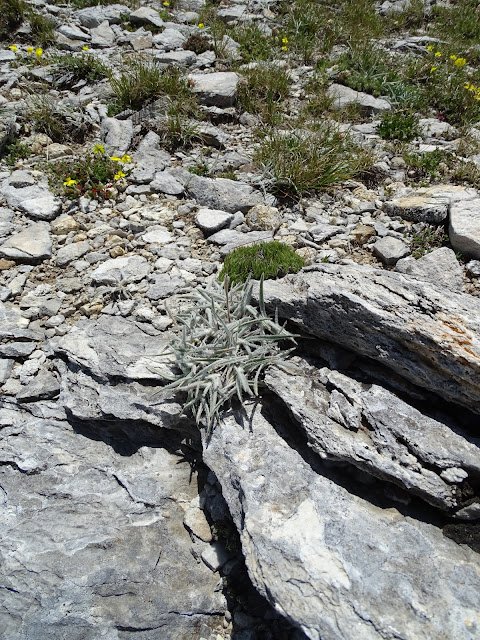 |
Alopecurus lanatus on Ulu Dag
|
In case you didn't believe me, here's the picture taken on Bithynian Olympus on July 8, 2015. By the way, note that once a plant is securely in cultivation where seed can be produced in abundance, adapted to garden conditions there's no need to re-collect in the wild unless there's a specific reason. Propagation prevents depredation.
 |
Allium zebdanense
|
One of my fifty favorite alliums! A gift of Gary and Tom Whittenbaugh, in Oelwein, Iowa--who have one of the finest rock gardens in America.
 |
| Allium senescenns 'Glaucum’ |
Mark McDonough--who knows a thing or two about onions--tells me this name is wrong. But he hasn't told me a better one--so I'm sticking with the name everyone uses--a classic plant.
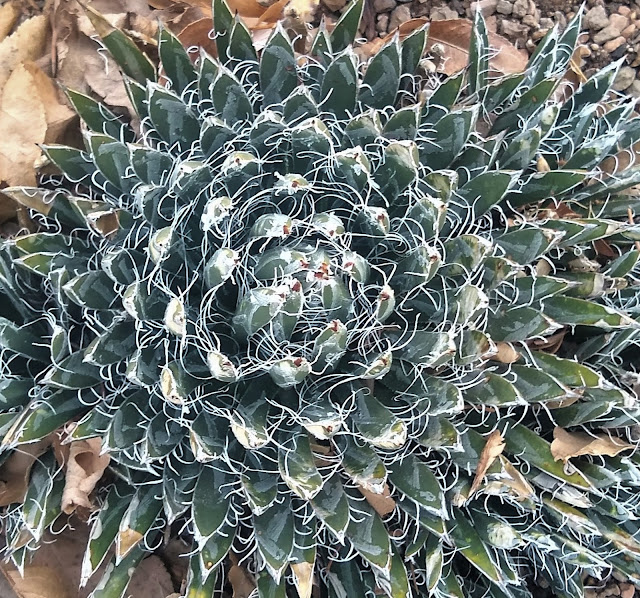 |
Agave toumeyana v. bella
|
Alas, my toumeyana v. bella doesn't look so good: I wouldn't be surprised if some of these bloomed soon at Denver Botanic Gardens where I photographed this--one of the choicest hardy plants.
 |
Agave neomexicana 'Skullhead'
|
If Dan Johnson could clone this agave, he'd be rich (considering the proliferation of Halloween tchotchkies!). Alas, it's not genetically stable. Tissue culture fails every time.
 |
Adonis amurensis
|
The first floral spectacle in my garden, starting in January some years. I wish I grew every Adonis.
 |
Acer buegerianum
|
Alas, not in my garden (all the others have been but the Agave): one of the surprises of this summer was being shown this on Fort Lewis College by Jeff Wagner. Never expected to see THAT in lofty Durango!
 |
Acantholimon cf. ulicinum
|
One of the few spikethrifts that has deigned to grow for me: the monsters I grew on my Eudora garden as even bigger a quarter century after we moved. They hate my sand. But a few have condescended thus far.
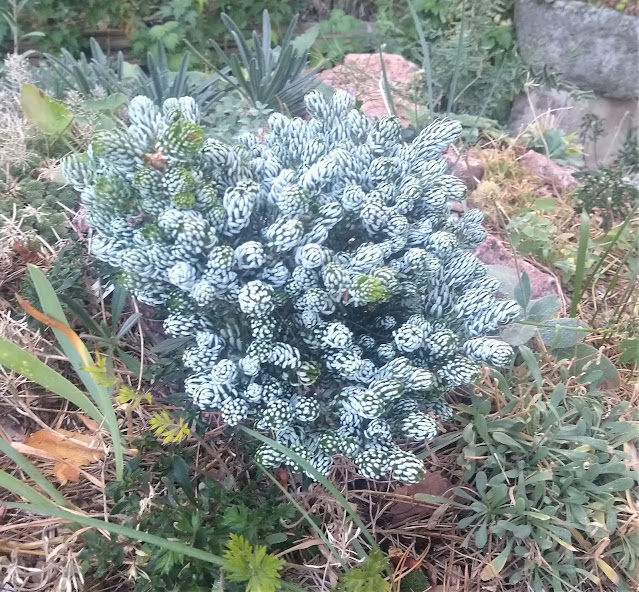 |
| Abies koreana 'Kohout’s Ice Breaker’ After Verbascum bombyiciferum and the plethora of Glaucium, this is the most frequently asked about plant in my garden. I have to admit I pause a split second each time I pass to admire it myself! So ends the list of "A's" I photographed this year in my garden. I missed quite a few--you'll be glad to know! and if I have some more "slow news" cycles I may plow through the rest of the alphabet! Watch out!
|
 |
Colchicum 'Giant' photographed by Kathy Purdy
|
I hope Ms Purdy doesn't object to my using her wonderful picture featured on the last issue of the Rock Garden Quarterly. I show it, hoping to inspire you to join the North American Rock Garden Society. I was elected president in July: if you like my blog, you belong in NARGS!
The North American Rock Garden Society (and her sister Societies in Canada, Europe and beyond) have become my most cherished community (after my family of course, and fellow Greeks who I'd better include quickly if I intend to live long).
The Society seed exchanges (coming up quickly) have given me some of my greatest plant treasures. By the gardens who've hosted me across New Zealand, the United Kingdom, Europe and of course North America are the most knowledgeable, modest, amazing brothers and sisters of the trowel! I a salute them, and suggest you click here and join us pronto! Once you do you can visit the website any time and read the recent bulletins. NARGS has been my University where I have learned much of what I know. It is the magic circle where I've met the finest gardeners in the world. You may well be or become one too!



















